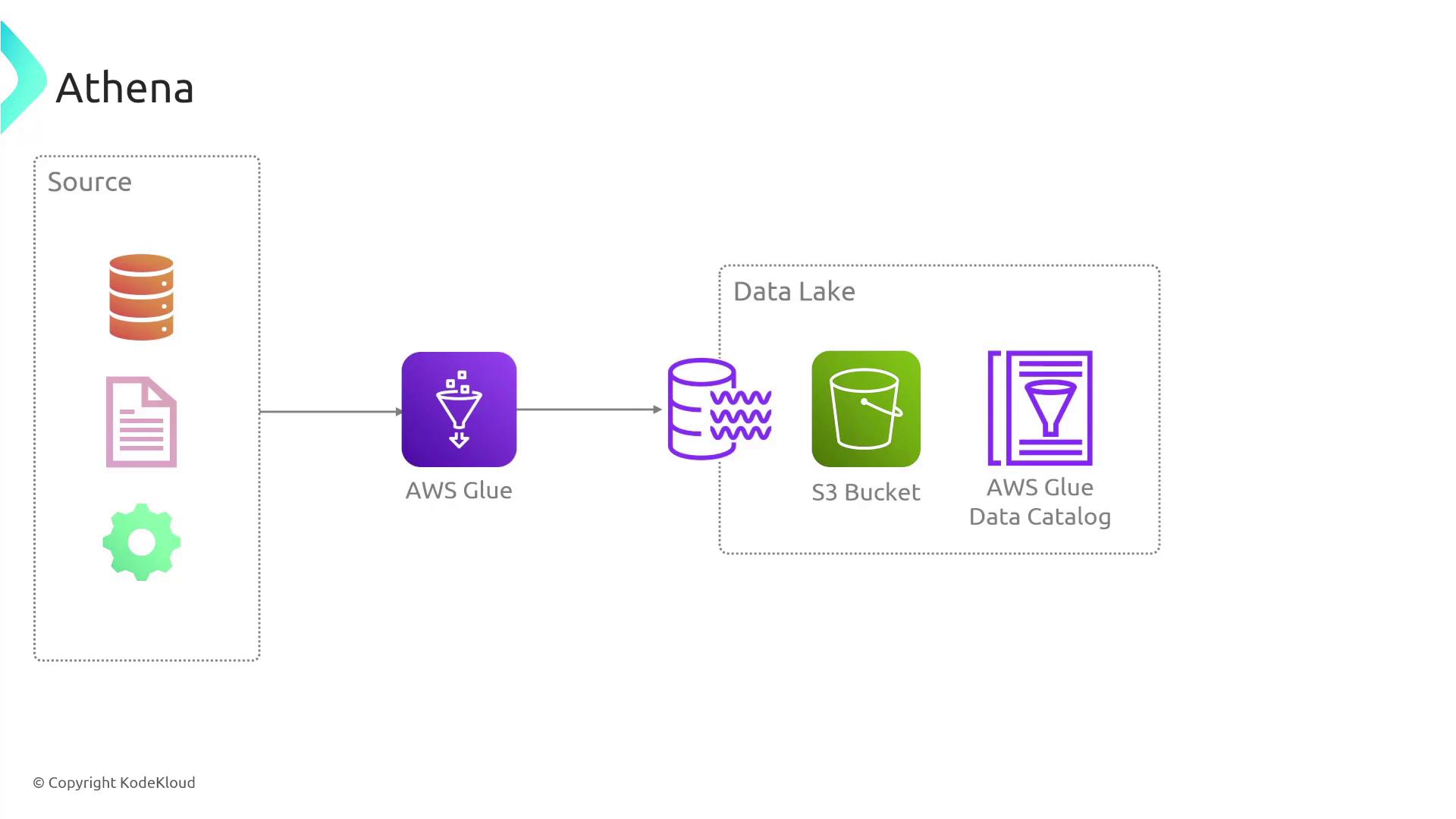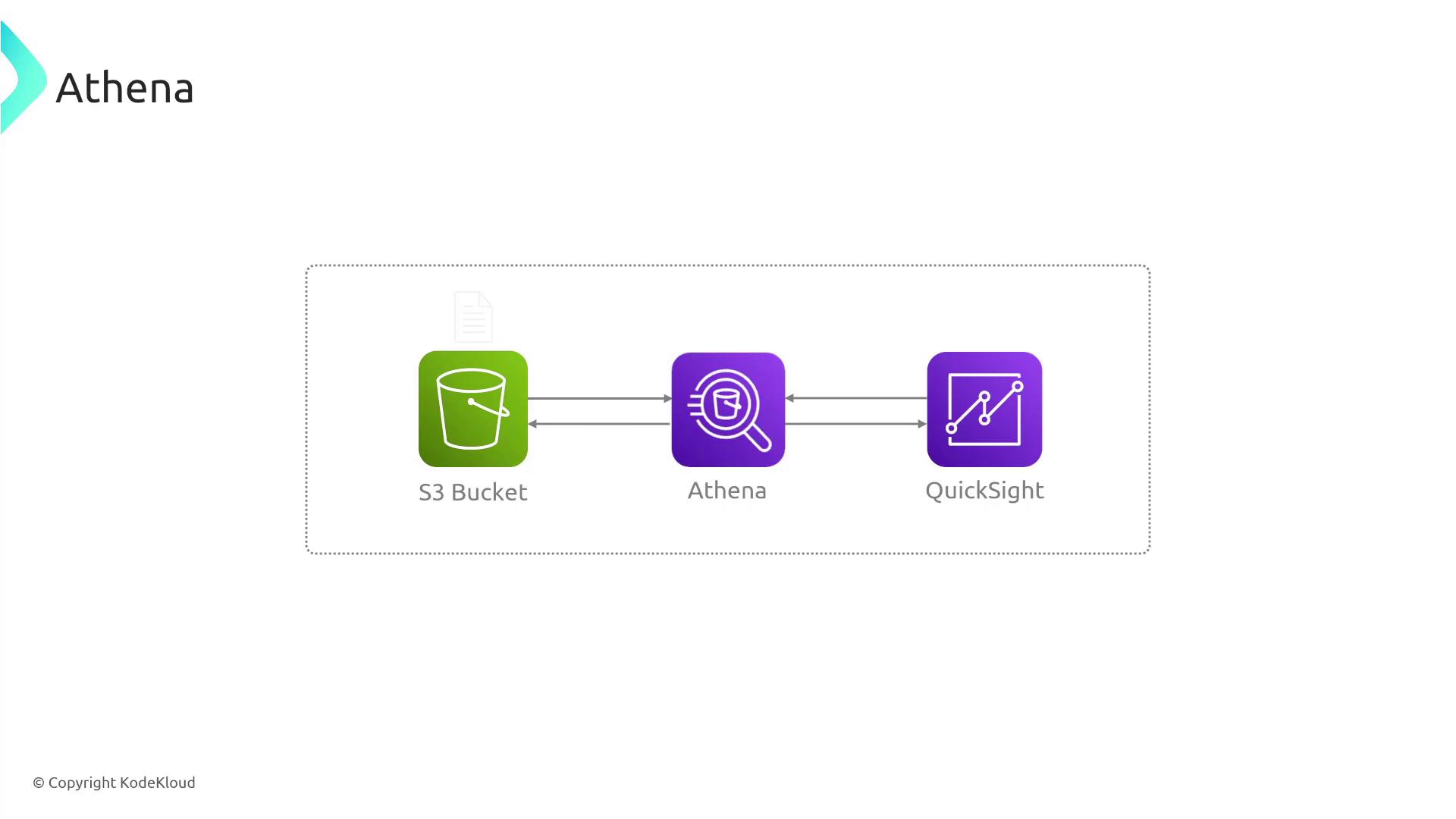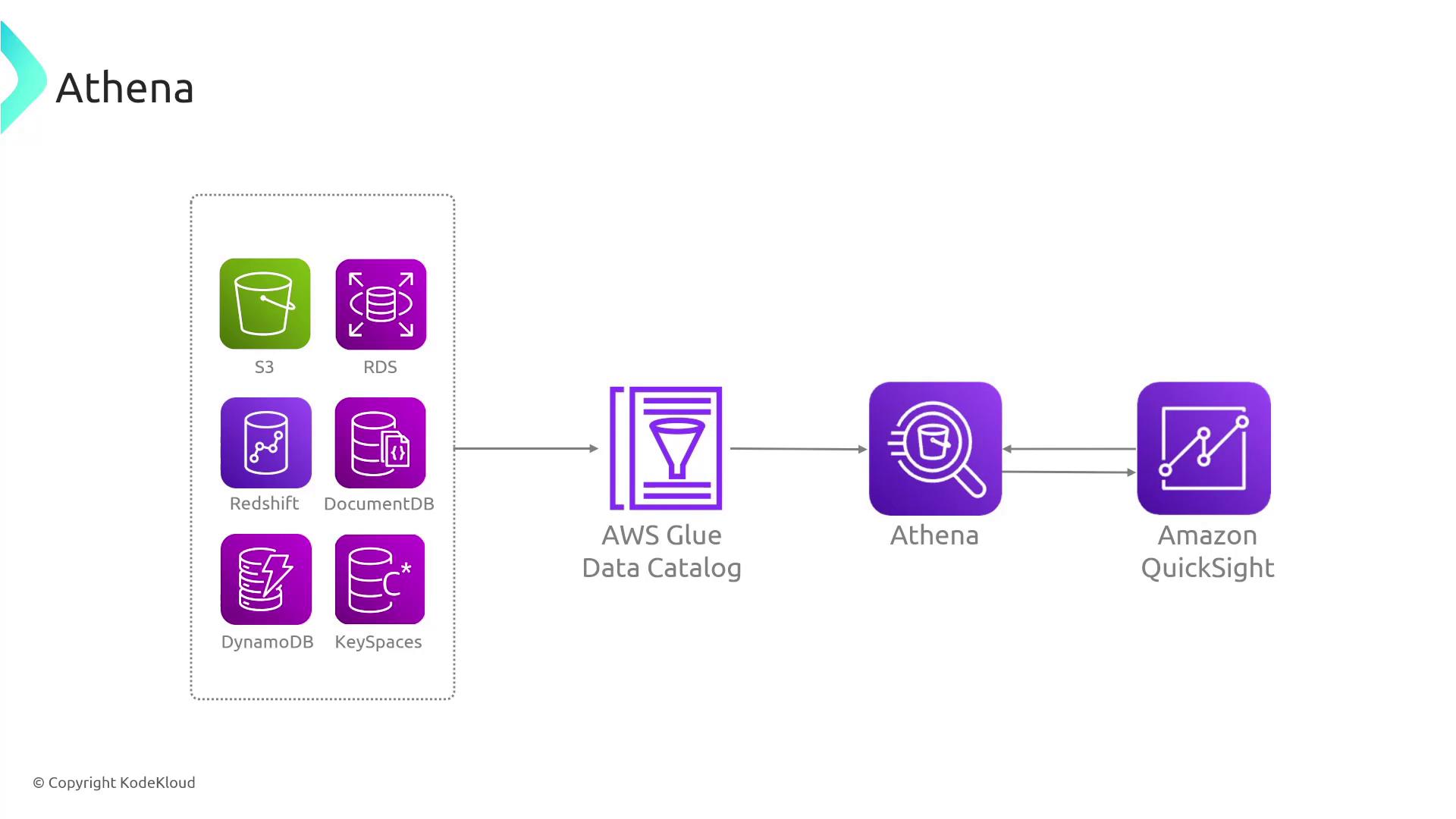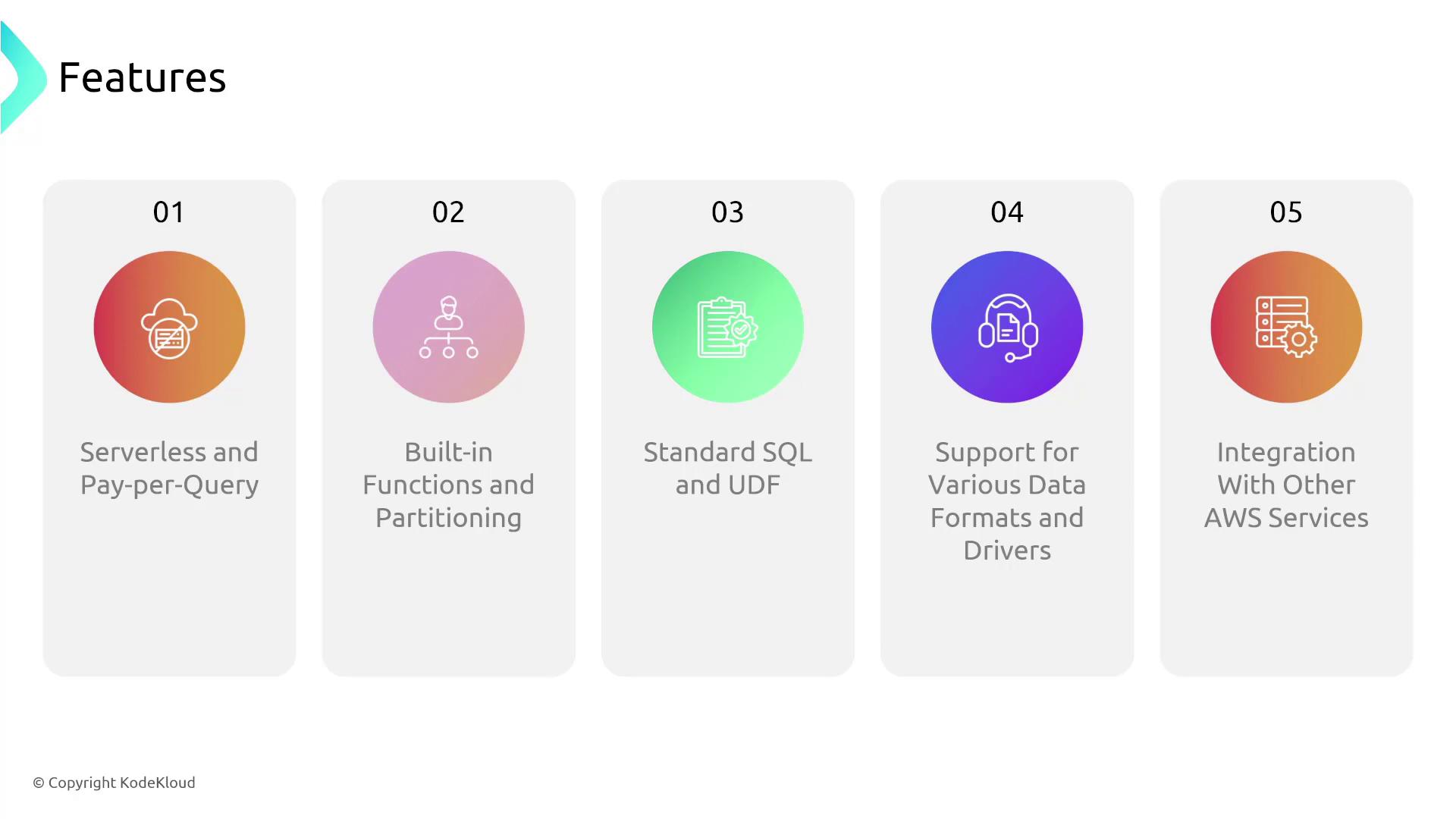AWS Solutions Architect Associate Certification
Services Data and ML
Athena
Welcome back, Future Solutions Architect Associates.
I'm Michael Forrester, and in this lesson we'll dive into AWS Athena—an essential tool in the AWS ecosystem for data storage and analysis. Athena empowers you to query datasets directly from Amazon S3, eliminating the need to manage traditional database infrastructure.
Overview
AWS Athena is designed to efficiently analyze both structured and unstructured data. It leverages the AWS Glue Data Catalog as a metadata repository, enabling you to perform SQL queries on data that has been extracted and transformed from various sources. Typical data sources include sales transactions, operational metrics, and more. The data processing workflow generally follows these key steps:
- Ingest raw data from diverse sources.
- Use AWS Glue to extract, clean, and convert data into efficient formats (e.g., Parquet, CSV, ORC).
- Store the processed data in an S3 bucket.
- Catalog the dataset with the AWS Glue Data Catalog.
- Query the data using AWS Athena with SQL.
The following diagram illustrates a typical data processing workflow using AWS services:

Once the data is cataloged by AWS Glue, Athena enables business analysts to run SQL queries directly on the S3-stored datasets. For instance, if you want to analyze customer purchase data to compute total sales by product within a specific date range, your SQL query might look like this:
SELECT product_id, SUM(purchase_amount) AS total_sales
FROM sales_data
WHERE purchase_date >= '2023-01-01'
AND purchase_date <= '2023-03-31'
GROUP BY product_id
ORDER BY total_sales DESC
LIMIT 5;
Note
Athena allows you to execute complex, ad hoc queries without managing any underlying infrastructure, making it both simple and cost-effective.
Integration with Visualization Tools
After running queries in Athena, you can seamlessly integrate the results with Amazon QuickSight for data visualization. QuickSight automatically updates dashboards based on the latest Athena query results, streamlining your data analysis and reporting workflow.

Athena's flexibility extends to many data sources, including Keyspaces, DynamoDB, DocumentDB, and RDS. These sources can be ingested into the Glue Data Catalog, queried with Athena, and then visualized using QuickSight.

Key Features
- Serverless and Cost-Efficient: Athena is fully serverless, meaning you only pay for your query execution time.
- Performance Optimization: Benefit from built-in functions and data partitioning to significantly boost query performance.
- Standard SQL and UDF Support: Use standard SQL along with user-defined functions (UDFs) written in Java for customized operations.
- Multiple Data Format Support: Query datasets stored in a variety of formats such as Parquet, ORC, JSON, CSV, and TSV.
- Broad Integration: Compatible with JDBC and ODBC drivers, Athena easily serves as a data source for popular BI tools like Power BI, and integrates seamlessly with numerous AWS services.

Conclusion
AWS Athena provides a fast, scalable, and cost-effective way to perform ad hoc SQL queries on large datasets stored in Amazon S3. With effective integration with AWS Glue for data cataloging and Amazon QuickSight for visualization, you can quickly derive insights without the complexity of traditional database management. Whether analyzing customer purchase trends or monitoring operational metrics, Athena is a robust solution for your data analytics needs.
Further Resources
For more details on how to optimize your queries and integrate Athena with other AWS services, visit the AWS Athena Documentation.
Watch Video
Watch video content